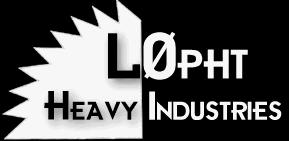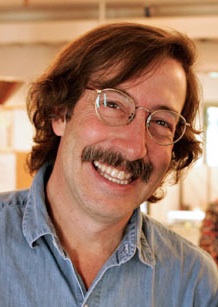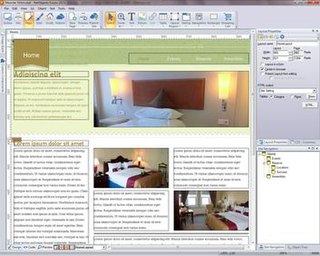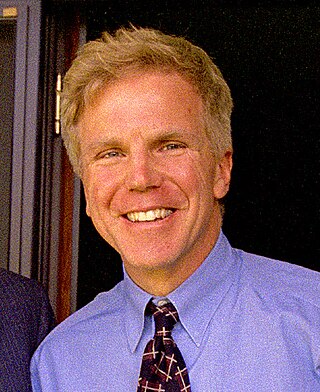Related Research Articles

L0pht Heavy Industries was a hacker collective active between 1992 and 2000 and located in the Boston, Massachusetts area. The L0pht was one of the first viable hackerspaces in the US, and a pioneer of responsible disclosure. The group famously testified in front of Congress in 1998 on the topic of ‘Weak Computer Security in Government’.

The National Museum of American History: Kenneth E. Behring Center is a historical museum in Washington, D.C. It collects, preserves, and displays the heritage of the United States in the areas of social, political, cultural, scientific, and military history. Among the items on display is the original Star-Spangled Banner. The museum is part of the Smithsonian Institution and located on the National Mall at 14th Street and Constitution Avenue NW in Washington, D.C.
Clement Mok is a graphic designer and author.

Elliott Erwitt was a French-born American advertising and documentary photographer known for his black and white candid photos of ironic and absurd situations within everyday settings. He was a member of Magnum Photos from 1953.

Rick Smolan is a former Time, Life, and National Geographic photographer best known as the co-creator of the Day in the Life book series. He is currently CEO of Against All Odds Productions, a cross-media organization.

America 24/7 was a photography book published by DK in 2003 about culture and life in the United States. It depicts life of Americans from every U.S. State.

Samir Arora is an Indian-American businessman and CEO of Sage Assist, a generative AI company, the former CEO or Kyro and founder of Sage Digital AI from 2016 to 2021, and the former CEO of Mode Media from 2003 to April 2016. He was CEO and chairman of the web design company NetObjects, Inc. from 1995 to 2001 and at Apple Inc. from 1982 to 1991. Arora was selected as one of the 21 Internet Pioneers that shaped the World Wide Web at the 1st Web Innovators Awards by CNET in 1997.

NetObjects, Inc. is a software company founded in 1995 by Samir Arora, David Kleinberg, Clement Mok and Sal Arora. The company is best known for the development of NetObjects Fusion, a web design application for small and medium enterprises with designers who need complete control over page layout and a similar user interface as desktop publishing applications.

NetObjectsFusion (NOF) is a web design tool, from 1996 to 2001 developed and distributed by NetObjects, Inc., marketed from 2001 until 2009 by Web.com, which bought the application in 2001, and from July 2009 on distributed again by the re-established NetObjects, Inc.
Rae Technology was a software company founded as a spin-off from Apple in 1992. Rae Technology was best known for its Personal Information Manager Rae Assist and for being the predecessor of NetObjects After transferring new developed technology for web site design to NetObjects in 1995, Rae Technology had no further public recognition.

Al Gore is a United States politician who served successively in the House of Representatives, the Senate, and as the Vice President from 1993 to 2001. In the 1980s and 1990s, he promoted legislation that funded an expansion of the ARPANET, allowing greater public access, and helping to develop the Internet.
David Elliot Cohen is an American author and editor who has, over a 30-year span, created more than 70 photography books. He is probably best known for the best-selling Day in the Life and America 24/7 series of photography books that he co-created with Rick Smolan.

The 11th Hour is a 2007 documentary film on the state of the natural environment created, produced, co-written and narrated by Leonardo DiCaprio. It was directed by Leila Conners Petersen and Nadia Conners and financed by Adam Lewis and Pierre André Senizergues, and distributed by Warner Independent Pictures.
Rae Assist was a software developed and distributed by Rae Technology from 1993 to 1995. Rae Assist was one of the first Personal Information Managers (PIM) and available for Apple Macintosh.

Matthew Naythons is an American photojournalist, physician and publisher. Naythons trained as a medical doctor, and began working as a photojournalist in the 1970s. During his photographic career, he founded an NGO, and later became a writer and publisher.

Sandra Eisert is an American photojournalist, now an art director and picture editor. In 1974 she became the first White House picture editor. Later she was named Picture Editor of the Year by the National Press Photographers Association in its annual competition. She contributed to 1989 earthquake coverage that won a Pulitzer Prize for the San Jose Mercury News. As of 2012, she has her own business providing strategic planning for startups.
Diana Markosian is an American artist of Armenian descent working as a documentary photographer, writer, and filmmaker.
Cotton Coulson was a photographer known for his work for National Geographic magazine.

The vice presidency of Al Gore lasted from 1993 to 2001, during the Bill Clinton administration. Al Gore was the 45th vice president of the United States, being twice elected alongside Bill Clinton in 1992 and 1996. Gore is considered to have been one of the most powerful and influential vice presidents in American history.

Mark Simon Wexler is an American documentary filmmaker and photojournalist.
References
- Smolan, Rick and Jennifer Erwitt. 24 Hours in Cyberspace:Photographed on one day by 150 of the world's leading photojournalists. Que Macmillan Publishing, 1996.

